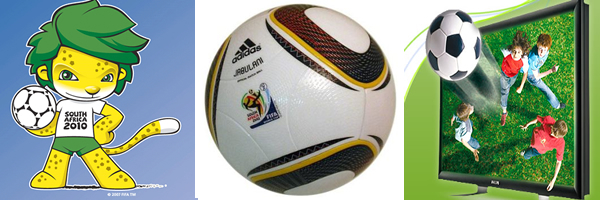Between June 11 and July 11, 2010, people from all over the world watched the Football World Cup matches. The event was held for the first time on the African continent, with South Africa as the host country. Although the tournament only lasted a month, the preparations took years and required a lot of effort, both physical and financial.
South Africa's choice was announced in May 2004, when the country defeated Morocco by fourteen to ten votes. For the choice, the 24 members of the Executive Committee of FIFA (International Football Federation) analyzed aspects such as tourism, security, stadiums, infrastructure, transport, hotel network, between others.
Generally, the countries that organize the World Cup select 12 host cities to host the games. As South Africa is not an economic power, FIFA allowed the choice of only nine cities, with Johannesburg having two stadiums. The other eight were: Cape Town, Durban, Nelspruit, Polokwane, Rustenburg, Pretoria, Bloemfontein and Port Elizabeth.

The main stadium of the 2010 World Cup was the Soccer City (Football City, in Portuguese), which is located in Johannesburg. It was built to replace the old FNB Stadium, expanding the capacity from 88 thousand to 94,700 spectators, making it the largest on the African continent. The works lasted three years and cost around 800 million reais.
Historically, the location of the Soccer City is quite important. It was in the old stadium that, in 1990, Nelson Mandela made his first speech after leaving prison. Johannesburg's other stadium, Ellis Park, belongs to a rugby team. In 1995, Ellis Park hosted the final of the world rugby, the country's main sport, won by South Africa itself and portrayed in the film Invictus, in 2009. This event was very important for racial integration, as it attracted black fans to a sport considered to be white.
2010 World Cup Participants
Since 1998, the World Cups count with the participation of 32 teams. They compete for a championship on their respective continents to get a place in the competition. The exception is the host country, which is always guaranteed participation.
The distribution of seats for this tournament was made as follows: 3 for North America; 4 for South America; 13 for Europe; 4 to Asia; 5 for Africa and 1 for the host country. The other two were played in the following clashes:
- 5th in South America x 4th in Central America (Uruguay beat Costa Rica)
- Oceania Champion x 5th in Asia (New Zealand beat Bahrain)
The World Cup draw is carried out through a gala event broadcast live across the planet. The best teams and the host country form the so-called “heads”, who are separated so as not to face each other in the 1st phase. Based on this criterion, the draw was carried out and the groups were like this:
Do not stop now... There's more after the advertising ;)
A group: South Africa, Mexico, Uruguay and France
Group B: Argentina, Nigeria, South Korea and Greece
Group C: England, United States, Algeria and Slovenia
Group D: Germany, Australia, Serbia and Ghana
Group E: Netherlands, Denmark, Japan and Cameroon
Group F: Italy, Paraguay, New Zealand and Slovakia
Group G: Brazil, North Korea, Ivory Coast and Portugal
Group H: Spain, Switzerland, Honduras and Chile
2010 World Cup Games
To win the Soccer World Cup you have to play seven matches. In the 1st phase, the selections play against the participants of their group, and the two that obtain the most points go to the round of 16. From then on, the countries compete on an eliminatory basis until the grand final, which was held on July 11, at the stadium Soccer City.
Brazil debuted at the Worlds on June 15th, against North Korea. The second game was against Côte d'Ivoire, on the following 20th. Brazil's last match in the 1st phase was on June 25th against Portugal.

2010 World Cup Curiosities
Tickets: South Africans paid a more affordable price than foreigners to watch the matches. The cheapest tickets cost R$36. Tourists, on the other hand, had to pay more than R$1,600 to watch the final game in the best seat in the stadium.
Mascot: A leopard was chosen to be the competition's mascot. He was given the name Zakumi, being ZA in reference to the country's initials and Kumi, whose significance is ten.
Ball: It has 11 different colors, each representing the dialects and ethnicities of South Africa. It was named Jabulani, which means "Bringing joy to all".
Digital: The 2010 World Cup was the first multimedia Cup in Brazil. Viewers had the opportunity to watch the matches live with high resolution (HD) images, whether on TV, cell phone or computer. The Cup was also broadcast in 3D (third dimension).
2014
The 2010 World Cup was part of a FIFA project whose objective was to take one of the biggest sporting events in the world, second only to the Summer Olympics, to all continents.
In 2002, Asia also hosted the tournament for the first time, and the World Cup returned to South America in 2014, after 36 years, since the last, held in Argentina, took place in 1978. THE 2014 Cup was headquartered Brazil!
by Adriano Lesme
Graduated in Journalism
* with information from the FIFA website - www.fifa.com - accessed in April 2010

